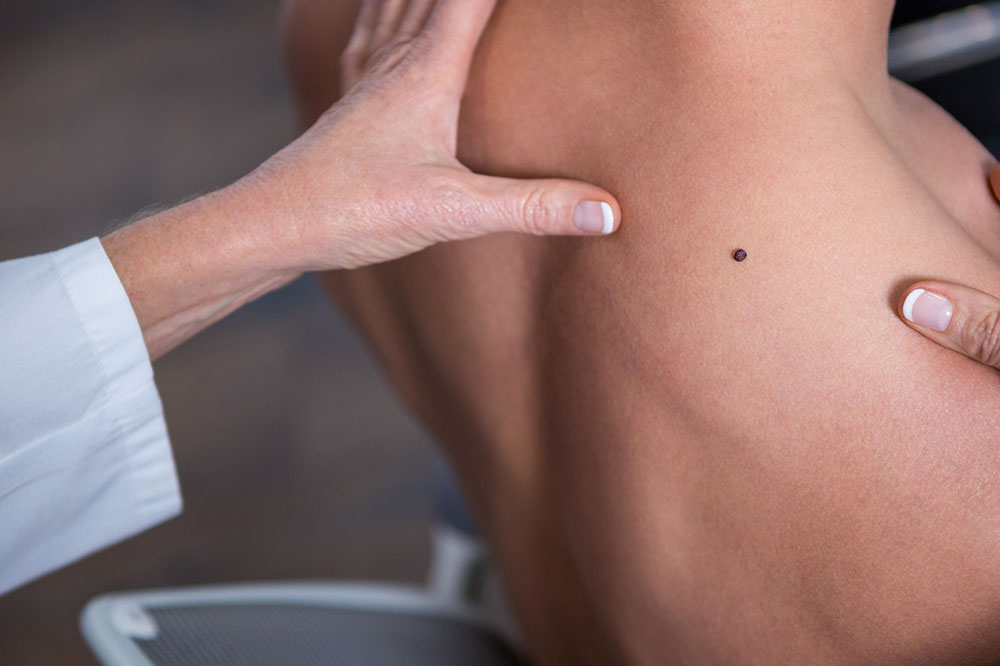
Symptoms and Types of Melanoma
Melanoma is the most severe skin cancer type. Melanoma develops in melanocytes. It can form in your eyes or inside certain parts of your body like your throat. The following is a simple guide to help you understand the symptoms and types of melanoma.
Major melanoma symptoms
When you have unusual lumps, moles, sores, markings, blemishes, or notice that a part of your skin has changed in appearance or how it feels, then it can point to melanoma or skin cancer. Doctors say that the sign that you should look out for is any new spot that has developed on your skin. Look out for the change in color, size, or shape of the spot. You might notice that a particular spot looks different than the other spots on your skin. If you have any of these, then you should consult a doctor at the earliest because it can be a sign of skin cancer or melanoma.
You might have heard about the popular ABCDE that can help understand the symptoms and types of melanoma. Here is what ABCDE is all about.
- A stands for asymmetry, and this is when half of the mole looks different from the other half.
- B stands for border, and this is where the border is blurred, ragged, or irregular.
- C stands for color, and this is where the color isn’t the same as the other half of the mole.
- D stands for diameter, and this is when the mole is more than 6 mm across.
- E stands for evolving, and this is where the mole changes color, size, or shape.
Other melanoma symptoms
Apart from this, some other signs that can indicate the onset of melanoma are as follow:
- You might notice you have a sore that is not healing
- Your mole is bleeding or oozing
- You notice the pigment spreading from the spot’s border to the rest of your skin
- You notice a painful sensation in the spot
- You see there is redness that has spread to the skin that surrounds the spot
Main types of melanoma
As we have covered the first part of symptoms and types of melanoma, now it is time to understand the major types of melanoma.
Superficial Spreading Melanoma
This is the most common type of melanoma, and it accounts for 70% of all melanoma cancers. Superficial spreading melanoma grows outward generally but can grow into your skin as well. This melanoma is flat with a thickness of less than 1mm. It is characterized by an uneven border and a different color. It can start from a mole that is already on your skin. It usually starts developing in your trunk.
Nodular Melanoma
This accounts for about 20% of melanoma skin cancers. It is the fastest type of melanoma cancer as it grows and spreads fairly quickly. This type of melanoma grows into your skin. You will notice a raised growth in your skin, which is called a polypoid. The growth can be mushroom-shaped, and the color of the growth can be black. It develops in your chest, face, or back. At times, the growth can appear on the skin areas that are not exposed to the sun.
Lentigo Maligna Melanoma
This melanoma type develops in older people and accounts for 10% of melanoma cancers. You wish to notice a growth that is flat and large with a tanned appearance. It generally has an uneven border. It can change color to black later on. This type of melanoma grows outward and, after a few years, can spread into your skin. Your face, arms, and ears can show signs of this type of melanoma because of exposure to the sun.
Acral Lentiginous Melanoma
People who have dark skin are more likely to have this type of melanoma cancer. It is not as common as other melanoma types. Initially, the spot might appear small and discolored. The color of the spot can be black or dark brown. Like lentigo malignant melanoma, this type grows outward and later can turn inward. It develops in the pans of your hands, feet soles, and under your nails. It is difficult to diagnose this type of melanoma type.



